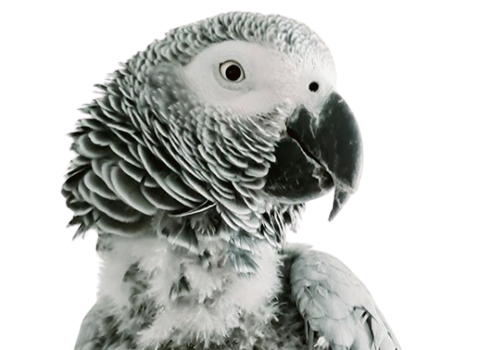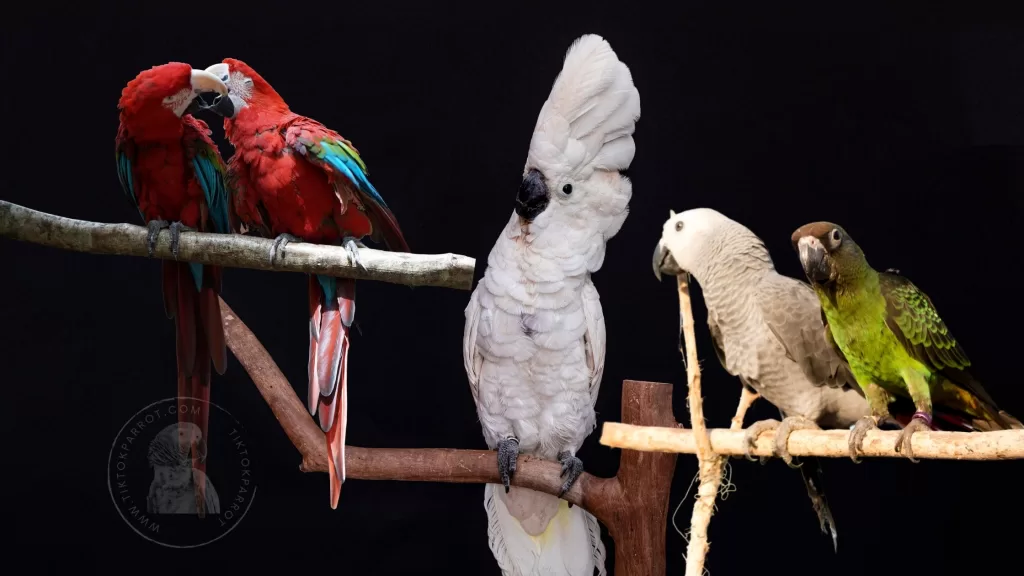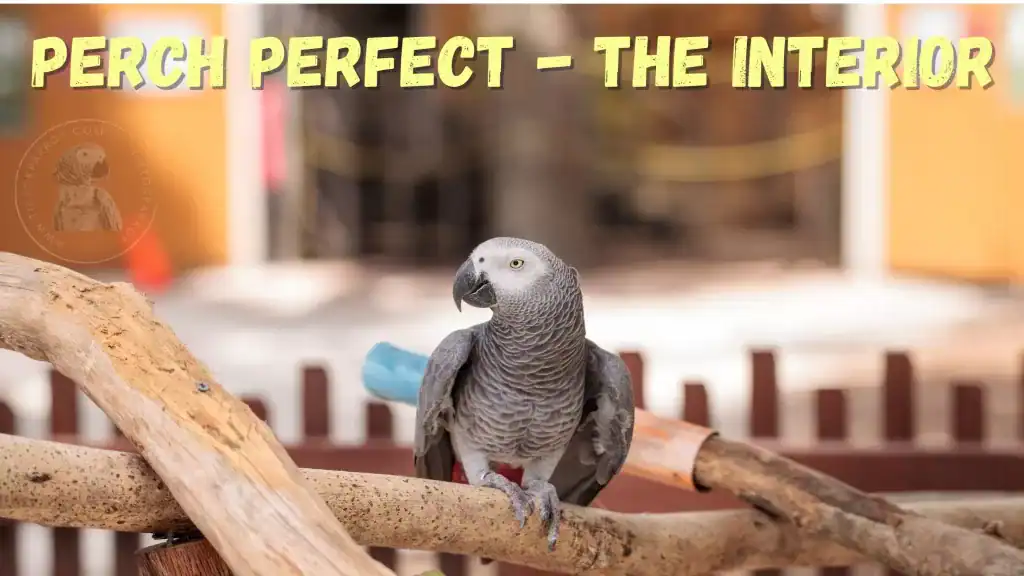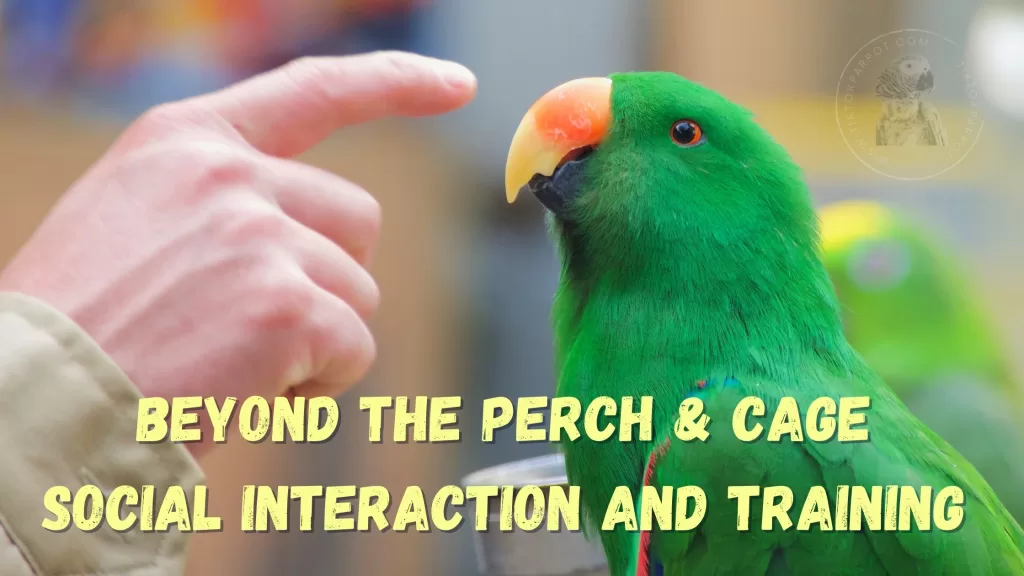Ahoy, fellow bird enthusiasts! Are you seeking the secrets to creating a perch perfect environment for your beloved parrot?
Well, buckle up, because you’re about to embark on a delightful journey to unlock the full potential of your feathery companion’s living space. This comprehensive guide will provide you with all the ins and outs of crafting an environment that caters to your parrot’s unique needs.
You’ll learn how to strike the perfect balance between mental stimulation and physical exercise, and keep your bird as happy as a lark. Let’s dive right in, shall we?
Feathered Wonderland
Perch Perfect Basics
As a responsible pet owner, you know that your parrot is not just a pet, but a beloved companion that deserves the best care and attention. Parrots like African greys are highly intelligent and social creatures that require a stimulating environment to thrive.
Creating a suitable living space for your parrot is crucial to their physical and mental well-being. In this section, we will provide you with some essential tips on how to create a perfect perch environment for your beloved parrot.
Perch size and material
Choosing the right perch size and material is essential for your parrot’s comfort and health. The diameter of the perch should be wide enough to support your bird’s feet without causing discomfort or strain.
A perch that is too narrow can lead to foot problems such as sores and blisters. The material of the perch should be non-toxic and easy to clean. Natural wood perches are an excellent choice as they provide a more natural feel and can be easily sanitized.
Perch placement
Where you place your parrot’s perch is crucial for their comfort and safety. The perch should be placed in an area that is well-lit, but not in direct sunlight, as this can cause overheating.
It should also be positioned away from any drafts or high-traffic areas that may cause stress to your bird. Ideally, the perch should be placed at the same height as your bird’s cage to provide a sense of continuity.
Perch variety
Offering your parrot a variety of perches can help keep them mentally stimulated and engaged. Different perches of varying sizes, shapes, and textures can provide a more natural environment for your bird to explore.
Rope perches, for example, can help improve your bird’s balance and foot dexterity, while natural wood perches can help sharpen their beak.
Perch cleanliness
Keeping your parrot’s perches clean is crucial to their health and hygiene. Regular cleaning and disinfecting of the perch can help prevent the buildup of bacteria and mold, which can cause respiratory problems for your bird. Remove any droppings or debris from the perch daily, and sanitize it weekly with a bird-safe disinfectant.
Perch accessories
Adding accessories to your parrot’s perch can help provide additional stimulation and enrichment. Toys, mirrors, and puzzle feeders can help keep your bird mentally engaged and entertained. However, it’s essential to choose accessories that are safe and appropriate for your bird’s size and behavior.
In conclusion, creating a suitable perch environment for your bird is essential for their physical and mental well-being. By choosing the right perch size and material, placing it in the correct location, offering variety, keeping it clean, and adding accessories, you can provide your bird with a stimulating and comfortable living space.
Choosing the Right Cage for Your Parrot
Size matters when it comes to your parrot’s home. A spacious cage gives your bird enough room to spread its wings, climb, and play. Opt for a cage with a minimum width of 36 inches, a depth of 24 inches, and a height of 48 inches. Horizontal bars are a plus, as they encourage climbing and provide extra exercise.
Location, Location, Location: Picking the Perfect Spot
Your bird’s cage should be placed in a lively area of your home, but not directly in the center of all the action. This way, your bird can observe and socialize without being overwhelmed by constant activity.
A Room with a View: Providing Visual Stimulation
Windows provide endless entertainment for your parrot. Place the cage near a window that offers a view of the outdoors, but make sure the bird isn’t exposed to direct sunlight or drafts. You can also hang bird-safe mirrors or pictures with vibrant colors to pique your bird’s interest.
Perch Perfect
The Interior
A. The Nitty-Gritty of Perches
- Types of Perches
Natural wood perches, like manzanita, dragonwood, or grapevine, are an excellent choice for your bird. Rope perches and platform perches offer variety, and can provide relief for your bird’s feet.
- Placement and Arrangement
Arrange perches at different heights and angles to encourage climbing and exploration. Avoid placing them directly above food and water dishes to prevent contamination.
B. Toys, Toys, and More Toys
African Greys are intelligent birds that need mental stimulation. Offer a variety of toys, such as foraging toys, puzzle toys, and shredding toys, to keep your bird engaged and entertained.
C. Let’s Talk Food: Foraging and Feeding Fun
Introduce foraging activities by hiding treats in toys, paper, or other containers. This not only stimulates your bird’s mind but also mimics their natural feeding habits in the wild.
Beyond the Perch & Cage
Social Interaction and Training
A. The Importance of Social Interaction for Your African Grey
African Greys thrive on social interaction and companionship. Make sure to spend quality time with your bird each day, talking, singing, or just hanging out together. This will help keep your African grey happy and well-adjusted.
B. Establishing a Bond: Building Trust with Your Bird
To develop a strong bond with your African Grey, approach your bird gently and calmly. Use positive reinforcement, like treats and praise, to encourage good behavior and make your bird feel comfortable in your presence.
C. Flying High: Training and Enrichment Activities
Training sessions provide mental stimulation and help strengthen your bond with your African Grey. Teach your bird simple tricks, like stepping up or retrieving objects, to keep their minds active and engaged.
Frequently Asked Questions
Addressing Common Concerns!
A. How often should I clean my African grey parrot’s cage?
A clean environment is essential for your bird’s health. Spot clean the cage daily, and perform a thorough cleaning, including washing all perches and toys, at least once a week.
B. Can I use natural branches as perches for my African grey?
Yes, natural branches make excellent perches. Make sure they are pesticide-free and scrubbed clean before placing them in the cage.
C. What types of toys are safe for my African grey to play with?
Choose toys made from bird-safe materials, like wood, rope, or stainless steel. Avoid toys with small parts that could pose a choking hazard or toxic materials that may harm your bird.
D. How do I encourage my African grey to forage for food?
Start by hiding treats in easy-to-find places, like paper cups or foraging toys, and gradually increase the difficulty as your bird becomes more adept at foraging. You can also scatter food on the cage floor or in a shallow dish to encourage natural foraging behaviors.
E. What is the ideal temperature range for my African grey’s environment?
African greys thrive in temperatures between 65 and 80 degrees Fahrenheit (18-27 degrees Celsius). Avoid exposing your bird to sudden temperature fluctuations or drafts.
F. How much sleep does my African grey need?
African greys generally need 10-12 hours of sleep per night. Establish a consistent sleep schedule by covering the cage with a light-blocking cloth during your bird’s bedtime.
G. Can I house multiple African greys in the same cage?
It’s generally not recommended to house multiple African greys in the same cage, as they can be territorial and may exhibit aggressive behavior. If you have more than one African grey, provide separate cages and monitor their interactions during shared out-of-cage time.
H. What should I feed my African grey to ensure a balanced diet?
A balanced diet for your African grey should consist of high-quality pellets, fresh fruits and vegetables, and occasional treats like nuts and seeds. Avoid giving your bird foods high in fat, salt, or sugar, as well as toxic foods like chocolate, avocado, or alcohol.
I. How can I tell if my African grey is bored or stressed?
Signs of boredom or stress in African greys include feather plucking, pacing, excessive vocalization, or self-mutilation. If you notice these behaviors, evaluate your bird’s environment and make necessary adjustments to provide more stimulation and enrichment.
J. How can I make the perches in my African grey’s cage more engaging and dynamic?
In addition to providing different types of perches, you can attach toys, swings, or ladders to them. Rearranging the perches and their accessories regularly can also keep your African grey engaged and stimulated.
K. What are some ways to create a perch perfect environment for my African grey when I’m not at home?
Consider providing a radio, TV, or bird-specific recordings to offer background noise and stimulation when you’re away. Automatic foraging toys, puzzle toys, or toys that can be refilled with treats can also help keep your bird entertained during your absence.
L. Can I create a perch perfect outdoor environment for my African grey during warm weather?
Yes, you can create a safe outdoor space for your African grey. Use a secure, weather-resistant aviary or cage, and ensure it’s placed in a sheltered spot with access to shade. Monitor the temperature and humidity closely and provide fresh water, food, and toys to keep your bird entertained.
M. How can I help my African grey feel safe in its perch perfect environment?
To help your African grey feel secure, avoid making sudden movements or loud noises around the cage. Provide hiding spots, like boxes or fabric tents, where your bird can retreat if it feels overwhelmed.
N. Are there any specific colors or patterns I should incorporate into my African grey’s perch perfect environment?
African greys are attracted to bright colors and interesting patterns. Introduce colorful toys, perches, or cage accessories to create a visually appealing environment. However, avoid overloading the cage with too many colors or patterns, as it might become overwhelming for your bird.
O. How can I create a multi-sensory perch perfect environment for my African grey?
Incorporate a variety of textures, sounds, and scents into your African grey’s environment. Offer toys made from diverse materials like wood, rope, and metal, and consider adding toys that make noise or have interesting scents. Providing fresh herbs or flowers (ensuring they are bird-safe) can also introduce new scents to the environment.
P. How often should I update my African grey’s perch perfect environment to maintain their interest?
Regularly changing the layout, toys, and perches in your African grey’s cage will help keep their environment fresh and engaging. Aim to make small adjustments every few weeks, such as rearranging toys or introducing new items, and perform a more significant overhaul every few months.
Q. How can I monitor my African grey’s behavior to ensure their perch perfect environment is meeting their needs?
Observe your African grey’s behavior and body language regularly. A happy, healthy bird will be active, vocal, and curious. If you notice any sudden changes, such as lethargy, aggression, or excessive feather plucking, reassess their environment and make any necessary adjustments to ensure their needs are being met. Consult with an avian veterinarian if you’re concerned about your bird’s well-being or if behavioral issues persist.
R. How do I create a perch perfect environment that also promotes healthy flight and exercise for my African grey?
In addition to providing a spacious cage with horizontal bars for climbing, you can also offer various swings, ladders, and exercise toys that encourage your African grey to move and stretch. Allow your bird supervised out-of-cage time in a bird-proofed room to promote healthy flight and exercise.
S. Can I incorporate plants into my African grey’s perch perfect environment for added stimulation?
Yes, adding bird-safe plants to your African grey’s environment can provide added stimulation and mimic their natural habitat. Ensure the plants are non-toxic and pesticide-free. Some safe options include spider plants, Boston ferns, and African violets. Always research a plant’s safety before introducing it to your bird’s environment.
T. What can I do to maintain a clean and hygienic perch perfect environment for my African grey?
Develop a regular cleaning routine, including daily spot cleaning and weekly deep cleaning of the cage, perches, and toys. Use bird-safe cleaning products and ensure all items are thoroughly dried before returning them to the cage. Regularly washing food and water dishes is also crucial to maintaining a hygienic environment.
My Final Thoughts
Creating a perch perfect environment for your African grey is a rewarding and fulfilling experience. By providing the right cage, perches, toys, and social interactions, you’ll foster a stimulating environment that promotes your bird’s mental and physical well-being.
With a bit of creativity and dedication, you’ll have your grey parrot happily singing, “Home sweet home!”
If you found this blog helpful, It would be great if you could share it with your family and friends who might find it useful as well.
You might like to read these as well 🙂
African Grey vs Amazon – A Comparison of Two Popular Pet Birds
The Mesmerizing Eyes of African Grey Parrot & What They Can Tell
Understanding of Grey Parrot’s Body Language
The Battle of the Birds: African Grey Parrot vs Macaw
African Grey Parrot Male or Female? (Determine Gender of African Grey)
Is Your African Grey a Jealous Bird? Here’s What You Need to Know!
The Surprising Benefits of Owning an African Grey Parrot
African Grey Parrots: The Ultimate Guide to Care and Training
Unlock the Secrets of Choosing the Perfect African Grey Parrot
The Importance of a Cage for Your African Grey Parrot
Winning Parrot Names: How to Choose a Name That Strengthens Your Bond
For more useful content about African grey parrots, you can subscribe my site with your email to get notification upon publishing a new blog, the subscribe box you can see on the right side of this page. Also if you get an alert on your web browser while browsing my site, allow it and that will also give you an alert whenever I publish a new blog. 🙂
Stay safe and much love !


If you are interested in supporting me, kindly consider utilizing my affiliate link for your Amazon purchases. Your support would be greatly appreciated.















